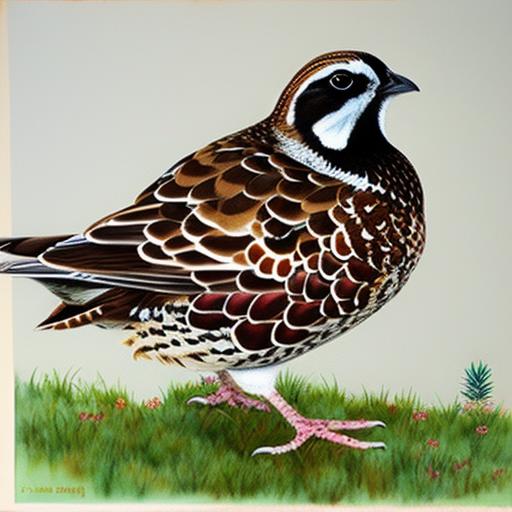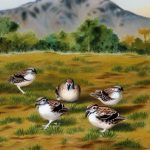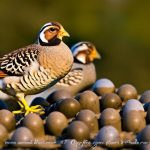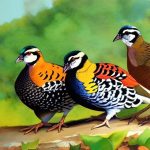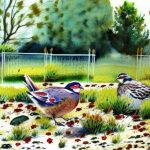Bobwhite quail, also known as the northern bobwhite, is a popular game bird native to North America. These small, ground-dwelling birds are known for their distinctive call, which sounds like “bob-white,” hence their name. Bobwhite quail are highly sought after for their delicious meat and are also popular among bird enthusiasts for their charming appearance and behavior.
There are several different breeds of bobwhite quail, each with its own unique characteristics and traits. Whether you are interested in raising bobwhite quail for hunting, conservation, or simply as pets, it’s important to understand the different breeds and their specific needs. In this article, we will explore the various breeds of bobwhite quail, their physical characteristics, and how to choose the right breed for your specific needs. We will also discuss the care, breeding, and conservation efforts for these beloved birds.
Key Takeaways
- Bobwhite quail are popular game birds known for their distinctive call and delicious meat.
- They are small, ground-dwelling birds with mottled brown and white feathers, and a plump, round body.
- Popular breeds of bobwhite quail include the Georgia Giant, Tennessee Red, and Mexican Speckled.
- When choosing a breed, consider factors such as size, temperament, and egg production to meet your specific needs.
- Caring for bobwhite quail involves providing a suitable habitat, proper nutrition, and protection from predators.
Characteristics and Physical Appearance of Bobwhite Quail
Bobwhite quail are small, plump birds with round bodies and short tails. They have a mottled brown and white plumage that provides excellent camouflage in their natural habitat. Their heads are adorned with a striking black and white striped pattern, and they have a distinctive crest on top of their heads. Bobwhite quail have bright red or orange beaks and legs, adding a pop of color to their otherwise earth-toned appearance.
These birds are known for their quick movements and agile nature, making them excellent runners and flyers. They have a strong, direct flight and can cover short distances at impressive speeds. Bobwhite quail are also known for their distinctive call, which is a series of whistled notes that sound like “bob-white” or “poor-bob-white.” This call is used to communicate with other quail and establish territory.
In terms of size, bobwhite quail are relatively small, with adults typically measuring around 9-10 inches in length. They are sexually dimorphic, meaning that males and females have different physical characteristics. Males are slightly larger and more brightly colored than females, with a more pronounced crest on their heads. Overall, bobwhite quail are charming and attractive birds that are a joy to observe and care for.
Popular Breeds of Bobwhite Quail
There are several popular breeds of bobwhite quail, each with its own unique traits and characteristics. The most common breeds include the Northern Bobwhite (Colinus virginianus), the Texas A&M (Colinus virginianus), the Tennessee Red (Colinus virginianus), and the Snowflake (Colinus virginianus). Each of these breeds has been selectively bred for specific traits such as size, coloration, or egg production.
The Northern Bobwhite is the most widely distributed breed of bobwhite quail and is found throughout the eastern United States. It is known for its hardiness and adaptability to a wide range of environments. The Texas A&M breed is a popular choice for commercial production due to its fast growth rate and high egg production. The Tennessee Red is prized for its striking red plumage and is often chosen for ornamental purposes. The Snowflake variety is known for its unique white and brown speckled plumage, making it a favorite among bird enthusiasts.
Each breed of bobwhite quail has its own specific needs and requirements, so it’s important to research the characteristics of each breed before making a decision. Consider factors such as climate, space availability, and intended use (hunting, conservation, ornamental) when choosing the right breed for your needs.
Choosing the Right Breed for Your Needs
When choosing a breed of bobwhite quail, it’s important to consider your specific needs and goals. If you are interested in raising quail for hunting purposes, you may want to select a breed that is known for its strong flying ability and quick movements. On the other hand, if you are raising quail for conservation efforts or as pets, you may prioritize traits such as attractive plumage or docile behavior.
Consider the climate and environment in which you will be raising your quail, as different breeds may have varying levels of cold or heat tolerance. Additionally, think about the space available for your quail and whether you have the resources to meet their specific needs. Some breeds may require more space or specialized housing than others.
It’s also important to consider the availability of breeders or hatcheries in your area that offer the specific breed you are interested in. Some breeds may be more readily available than others, so it’s important to do your research and plan ahead.
Ultimately, the right breed for you will depend on your individual circumstances and goals. Take the time to carefully consider the traits and characteristics that are most important to you when selecting a breed of bobwhite quail.
Caring for Bobwhite Quail
Caring for bobwhite quail requires attention to their specific needs in terms of housing, diet, and overall well-being. Quail should be provided with a spacious enclosure that allows them to move freely and engage in natural behaviors such as dust bathing and foraging. The enclosure should also provide protection from predators and the elements.
Quail require a balanced diet that includes a high-quality game bird feed supplemented with fresh greens, fruits, and insects. It’s important to provide access to clean water at all times, as quail can quickly become dehydrated. Additionally, providing a source of grit or small stones will help quail properly digest their food.
Regular health checks are essential to ensure the well-being of your quail. Look out for signs of illness or injury, and consult with a veterinarian experienced in avian care if you have any concerns. Proper hygiene and cleanliness in the quail enclosure are also crucial for preventing disease and maintaining overall health.
Quail are social birds that thrive in groups, so it’s important to provide them with companionship. However, be mindful of overcrowding, as this can lead to stress and aggression among the birds. With proper care and attention to their specific needs, bobwhite quail can thrive in captivity and provide joy to their caretakers.
Breeding and Raising Bobwhite Quail
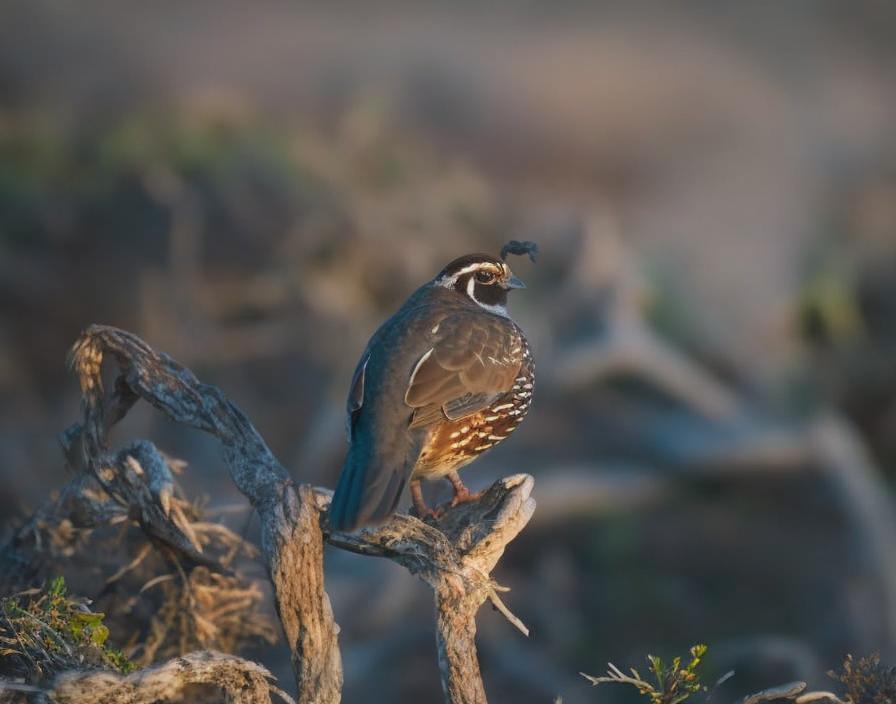
Breeding bobwhite quail can be a rewarding experience for bird enthusiasts and conservationists alike. Before embarking on a breeding program, it’s important to understand the specific requirements for successful breeding and raising of quail.
Quail breeding requires careful attention to factors such as lighting, temperature, diet, and nesting materials. Providing a suitable nesting area with proper substrate is essential for encouraging breeding behavior in quail. Additionally, ensuring that males and females are properly paired will help promote successful mating.
Once eggs are laid, they should be carefully collected and placed in an incubator set at the appropriate temperature and humidity levels. Incubation typically takes around 23-24 days, after which the chicks will hatch. It’s important to provide a warm, safe environment for the chicks to grow and develop.
Raising quail chicks requires attention to their specific dietary needs and protection from predators. Chicks should be provided with a high-protein starter feed and access to clean water at all times. As they grow, they will require additional space and enrichment to encourage natural behaviors.
Breeding and raising bobwhite quail requires dedication and attention to detail, but it can be a highly rewarding experience. Whether you are breeding quail for conservation efforts or simply as pets, it’s important to prioritize the well-being of the birds throughout the breeding process.
Conservation Efforts for Bobwhite Quail Breeds
Conservation efforts for bobwhite quail breeds are crucial for ensuring the long-term survival of these beloved birds. Habitat loss, predation, and changes in land use have all contributed to declining populations of bobwhite quail in recent years. As a result, conservationists have been working tirelessly to protect and restore quail habitats while also promoting responsible hunting practices.
One key aspect of conservation efforts is habitat restoration, which involves creating suitable environments for quail to thrive. This may include planting native grasses and shrubs, providing food plots, and implementing land management practices that benefit quail populations. By restoring natural habitats, conservationists can help ensure that bobwhite quail have the resources they need to survive and reproduce.
In addition to habitat restoration, conservation efforts also focus on raising awareness about the importance of bobwhite quail conservation. Educating the public about the ecological significance of these birds and promoting responsible land management practices can help garner support for conservation initiatives.
Furthermore, partnerships between government agencies, non-profit organizations, landowners, and hunters play a crucial role in conservation efforts for bobwhite quail breeds. By working together towards common goals, these stakeholders can make significant strides in protecting and preserving bobwhite quail populations.
Ultimately, conservation efforts for bobwhite quail breeds are essential for maintaining healthy ecosystems and preserving biodiversity. By supporting these efforts through habitat restoration, education, and collaboration, we can help ensure that future generations will continue to enjoy the beauty and charm of these iconic birds.
If you’re interested in learning about different breeds of bobwhite quail, you might also want to explore the fascinating world of guinea fowl. Poultry Wizard has a great article on when guinea fowl lay eggs, which provides valuable insights into the breeding and egg-laying habits of these unique birds. Whether you’re a novice or experienced breeder, understanding the reproductive behavior of various poultry species can enhance your overall knowledge and success in raising them.
FAQs
What are the different breeds of bobwhite quail?
There are several different breeds of bobwhite quail, including the Northern bobwhite (Colinus virginianus), the Texas A&M (Colinus virginianus) and the Tennessee Red (Colinus virginianus).
What are the characteristics of the Northern bobwhite quail?
The Northern bobwhite quail is known for its distinctive call, which sounds like “bob-white.” It is a small, ground-dwelling bird with a mottled brown and white plumage.
What are the characteristics of the Texas A&M bobwhite quail?
The Texas A&M bobwhite quail is a selectively bred strain of the Northern bobwhite, known for its fast growth rate and high egg production. It is often raised for meat and egg production.
What are the characteristics of the Tennessee Red bobwhite quail?
The Tennessee Red bobwhite quail is a selectively bred strain of the Northern bobwhite, known for its reddish plumage. It is often raised for its ornamental value.
What are the differences between the different breeds of bobwhite quail?
The different breeds of bobwhite quail vary in terms of their physical characteristics, such as plumage color, as well as their suitability for meat or egg production. Some breeds may also have been selectively bred for specific traits, such as disease resistance or temperament.
Meet Walter, the feathered-friend fanatic of Florida! Nestled in the sunshine state, Walter struts through life with his feathered companions, clucking his way to happiness. With a coop that’s fancier than a five-star hotel, he’s the Don Juan of the chicken world. When he’s not teaching his hens to do the cha-cha, you’ll find him in a heated debate with his prized rooster, Sir Clucks-a-Lot. Walter’s poultry passion is no yolk; he’s the sunny-side-up guy you never knew you needed in your flock of friends!

